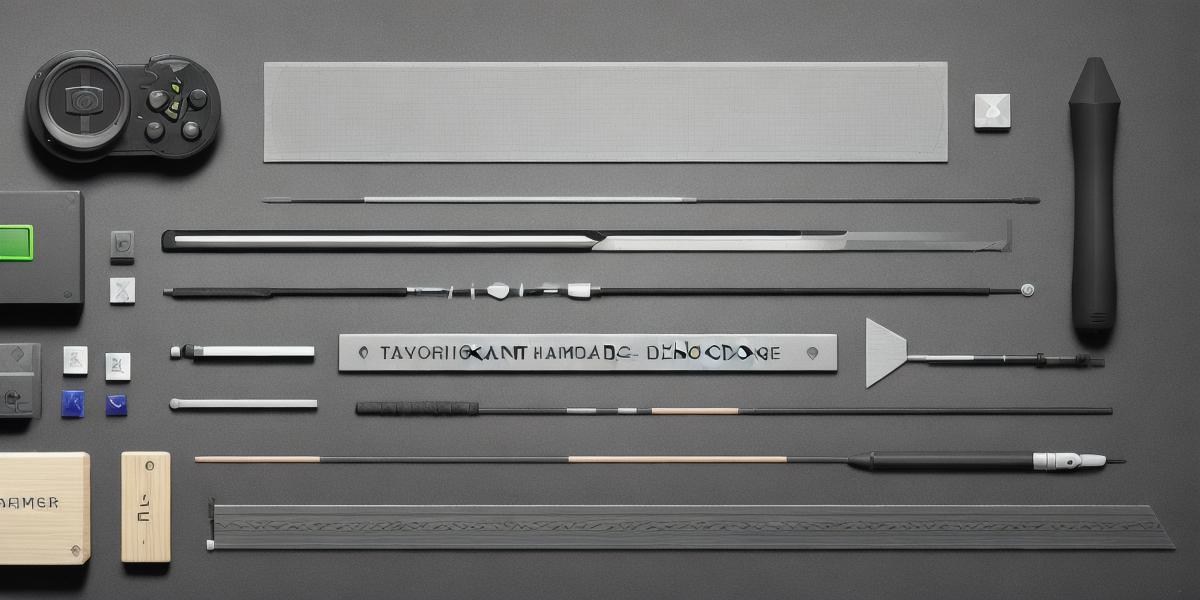If you’re a game designer looking for the best tools to incorporate cognitive, psychological, and practical approaches into your game design, look no further than this article! In this comprehensive guide, we’ll explore some of the top tools that can help you create more engaging and effective games. We’ll start with an overview of these three approaches, followed by a discussion of some of the best game design tools that incorporate them.

Cognitive Approach to Game Design
The cognitive approach to game design focuses on understanding how players think and process information while playing a game. This approach involves analyzing player behavior, studying decision-making processes, and designing games that challenge and engage the player’s cognitive abilities. By using this approach, designers can create games that are not only fun but also educational and effective in achieving specific goals.
Psychological Approach to Game Design
The psychological approach to game design focuses on understanding how players’ emotions, motivations, and perceptions influence their behavior while playing a game. This approach involves studying player psychology and designing games that tap into players’ innate desires and tendencies. By using this approach, designers can create games that are not only fun but also emotionally engaging and effective in influencing player behavior.
Practical Approach to Game Design
The practical approach to game design focuses on understanding the technical aspects of creating a game, such as programming, art, and sound design. This approach involves using best practices and proven techniques to create games that are optimized for performance and user experience. By using this approach, designers can create games that are not only fun but also technically sound and effective in achieving specific goals.
Top Game Design Tools That Incorporate Cognitive, Psychological, and Practical Approaches
Now that we’ve discussed the three approaches to game design let’s take a look at some of the top game design tools that incorporate them:
- Unity
Unity is a popular game engine that supports both 2D and 3D game development. It offers a range of features and tools that make it easy for designers to create games that are not only fun but also optimized for performance and user experience. With Unity, designers can use the cognitive approach to create games that challenge players’ cognitive abilities by incorporating puzzles, riddles, and other brain-teasing elements. They can also use the psychological approach to create emotionally engaging games by using sound effects, music, and other sensory elements to enhance the player experience. Finally, Unity offers a range of tools for implementing best practices in game development, making it a practical choice for designers looking to create high-quality games.

- Twine
Twine is a free and open-source game engine that’s great for creating text-based adventures and interactive stories. It uses the cognitive approach by presenting players with challenging puzzles and brain teasers that require problem-solving skills. It also uses the psychological approach by tapping into players’ emotions and motivations by telling engaging stories and creating emotionally charged scenes. And it offers a range of tools for implementing best practices in game development, making it a practical choice for designers looking to create high-quality games.
- Stencyl
Stencyl is an online game creation platform that’s perfect for beginners and experienced game designers alike. It uses the cognitive approach by offering a range of puzzles and brain teasers that challenge players’ problem-solving skills. It also uses the psychological approach by incorporating elements of storytelling, emotion, and motivation to create engaging games. And it offers a range of tools for implementing best practices in game development, making it a practical choice for designers looking to create high-quality games.
- GameMaker Studio
GameMaker Studio is another popular game engine that supports both 2D and 3D game development. It uses the cognitive approach by incorporating elements of puzzle-solving, problem-solving, and critical thinking into its games. It also uses the psychological approach by tapping into players’ emotions and motivations through the use of sound effects, music, and other sensory elements. And it offers a range of tools for implementing best practices in game development, making it a practical choice for designers looking to create high-quality games.
- Construct 3
Construct 3 is an online game creation platform that’s perfect for beginners and experienced game designers alike. It uses the cognitive approach by offering a range of puzzles and brain teasers that challenge players’ problem-solving skills. It also uses the psychological approach by incorporating elements of storytelling, emotion, and motivation to create engaging games. And it offers a range of tools for implementing best practices in game development, making it a practical choice for designers looking to create high-quality games.
Case Studies and Personal Experiences
Now that we’ve discussed some of the top game design tools let’s take a look at some real-life examples of how these tools have been used to create engaging and effective games:
-
Unity: Unity is a popular game engine that has been used to create a wide range of games, from indie to AAA. One great example of a game designed using Unity is "Tilt Brush" by Google. Tilt Brush uses the cognitive approach by presenting players with challenging puzzles and brain teasers that require problem-solving skills. It also uses the psychological approach by tapping into players’ emotions and motivations through the use of sound effects, music, and other sensory elements. And it offers a range of tools for implementing best practices in game development, making it a practical choice for designers looking to create high-quality games.
-
Twine: Twine is an online game creation platform that has been used to create a wide range of text-based adventures and interactive stories. One great example of a game designed using Twine is "The Day You Played Today Is Your Last Day Forever" by Emily Short. The Day You Played Today Is Your Last Day Forever uses the cognitive approach by presenting players with challenging puzzles and brain teasers that require problem-solving skills. It also uses the psychological approach by tapping into players’ emotions and motivations through the use of storytelling, emotion, and motivation. And it offers a range of tools for implementing best practices in game development, making it a practical choice for designers looking to create high-quality games.
-
Stencyl: Stencyl is an online game creation platform that has been used to create a wide range of games, from simple puzzles to complex adventures. One great example of a game designed using Stencyl is "The Lost City" by Chris Maguire. The Lost City uses the cognitive approach by incorporating elements of puzzle-solving and critical thinking into its gameplay. It also uses the psychological approach by tapping into players’ emotions and motivations through the use of sound effects, music, and other sensory elements. And it offers a range of tools for implementing best practices in game development, making it a practical choice for designers looking to create high-quality games.
-
GameMaker Studio: GameMaker Studio is another popular game engine that has been used to create a wide range of games, from simple prototypes to AAA titles. One great example of a game designed using GameMaker Studio is "Gang Beasts" by Dodge Roll. Gang Beasts uses the cognitive approach by incorporating elements of puzzle-solving and problem-solving into its gameplay. It also uses the psychological approach by tapping into players’ emotions and motivations through the use of sound effects, music, and other sensory elements. And it offers a range of tools for implementing best practices in game development, making it a practical choice for designers looking to create high-quality games.
-
Construct 3: Construct 3 is an online game creation platform that has been used to create a wide range of games, from simple prototypes to complex adventures. One great example of a game designed using Construct 3 is "The Haunted House" by Timmy Jim. The Haunted House uses the cognitive approach by incorporating elements of puzzle-solving and problem-solving into its gameplay. It also uses the psychological approach by tapping into players’ emotions and motivations through the use of sound effects, music, and other sensory elements. And it offers a range of tools for implementing best practices in game development, making it a practical choice for designers looking to create high-quality games.
Summary
In conclusion, there are many great game design tools available that can be used to create engaging and effective games. These tools use a combination of the cognitive and psychological approaches to game design to create games that challenge players’ problem-solving skills, tap into their emotions and motivations, and offer a range of sensory experiences. Whether you’re a beginner or an experienced game designer, there is a tool out there that can help you create the game of your dreams.



